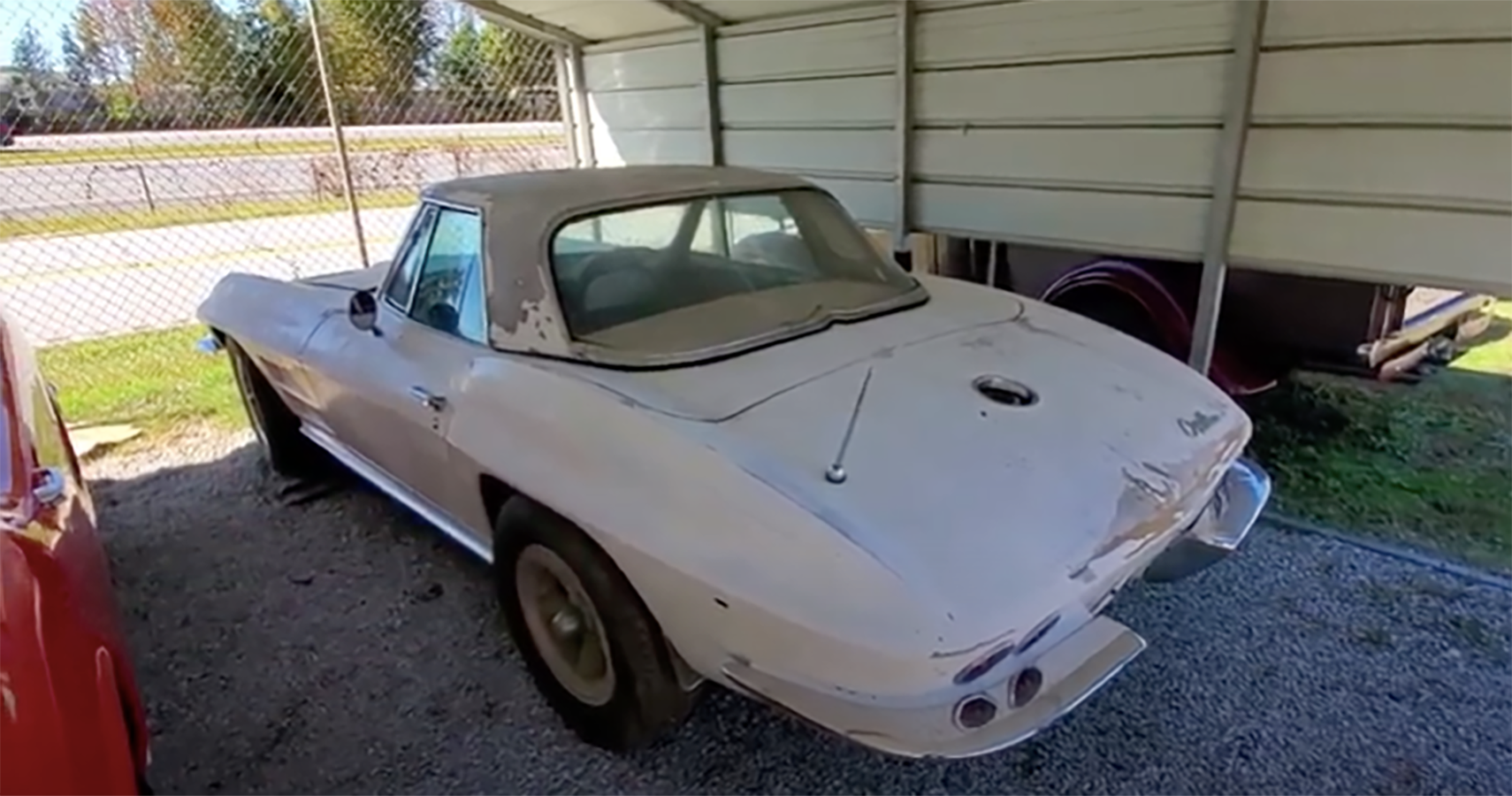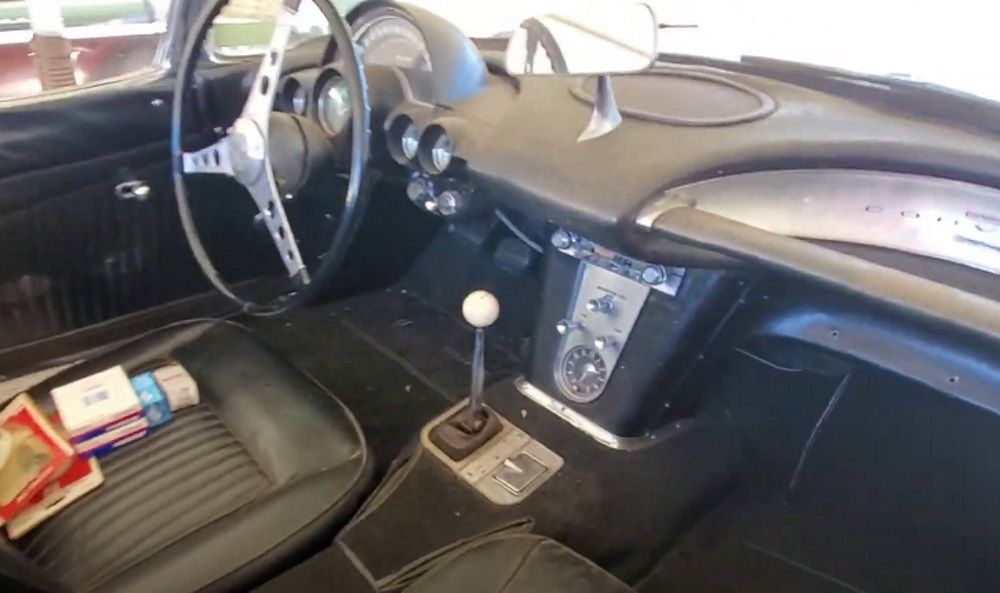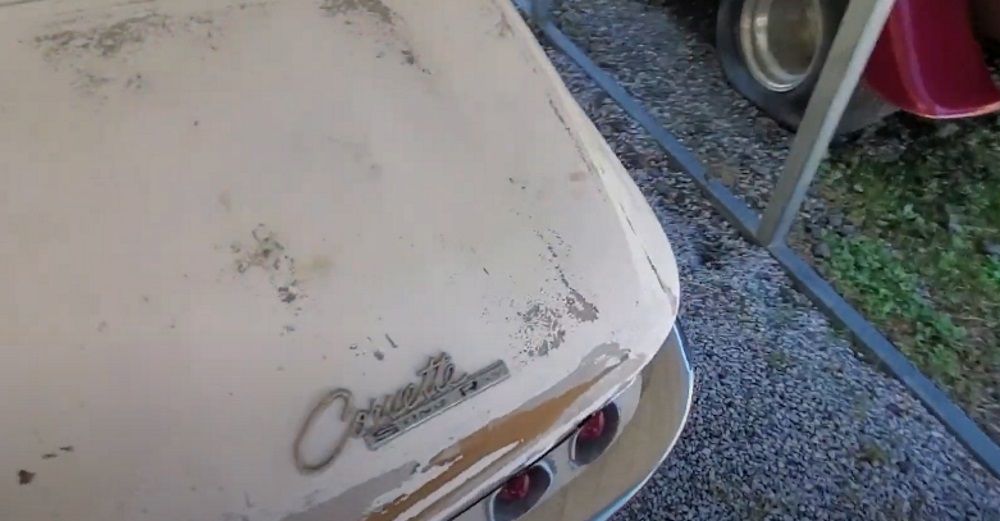In a recent video, the YouTube channel Classic Performance looks at a barn find C2 Corvette stored away for more than 40 years in the Greenville, South Carolina area. While the video offers a glance at a 1962 C1 Corvette convertible that appears in excellent shape, the focus is really on a 1964 Corvette Sting Ray hardtop convertible.
An American Classic Ready For Restoration
At first look, the C2 appears in sorry shape. Paint is absent in many spots, and the fiberglass is far from sleek and smooth. But, upon closer inspection, it’s easy to see these are readily fixable surface imperfections.
The presenter walks viewers through an interesting survey of the car’s originality. Factory components include the valve covers, distributor, radiator, and fuel filter. In other words, the Corvette appears to be in quite stock condition. Even the fuel filter looks to be untouched.
The highlight of this ‘64 Vette is its numbers-matching condition: an original 327 cubic inch V-8 (making 365 horsepower, when new) is paired with a four-speed manual. It’s the most powerful non-fuel injected engine offered in the 1964 Corvette. Two tops are also included.
About the C2 (Second-Generation) Corvette
While the ten years of the first-generation Corvette helped transform the two-seater from meh to wow, it took the introduction of the C2 Vette to bring things to the next level. Its striking exterior design emphasized the importance of aerodynamics while creating one of the most iconic designs in automotive history. The 1963-only split-window hardtop is a treasured classic. Interestingly, the launch of the C2 sees the introduction of the Sting Ray name (spelled as “Stingray” on modern-day Corvettes).
What To Know About Buying A C2
For budding collectors, the C2 Vette offers opportunities and challenges. The Corvette generation with the shortest production run (1963-1967) is one of the more demanding generations to come across. Of course, there being almost 50 years since a C2 left the factory doesn’t help.
In addition to an all-new exterior, Chevy used a fresh platform that incorporated a lower center of gravity for more racecar-like performance. Toss in a significantly improved suspension, and the C2 relies on more steel underneath than the C1. To compensate for this extra weight, Chevrolet used less (thinner) fiberglass in the body.
This combination means that a C2 frame should be thoroughly inspected for corrosion before making a purchase or considering a restoration, which isn’t discussed in the YouTube video. Wisely, the presenter does mention the other important area to check out, the fiberglass body. Yes, a Corvette’s exterior won’t rust, but age, accidents, and the elements can all take their toll on fiberglass.
Sources: YouTube, Corvette Museum, corvsport.com



